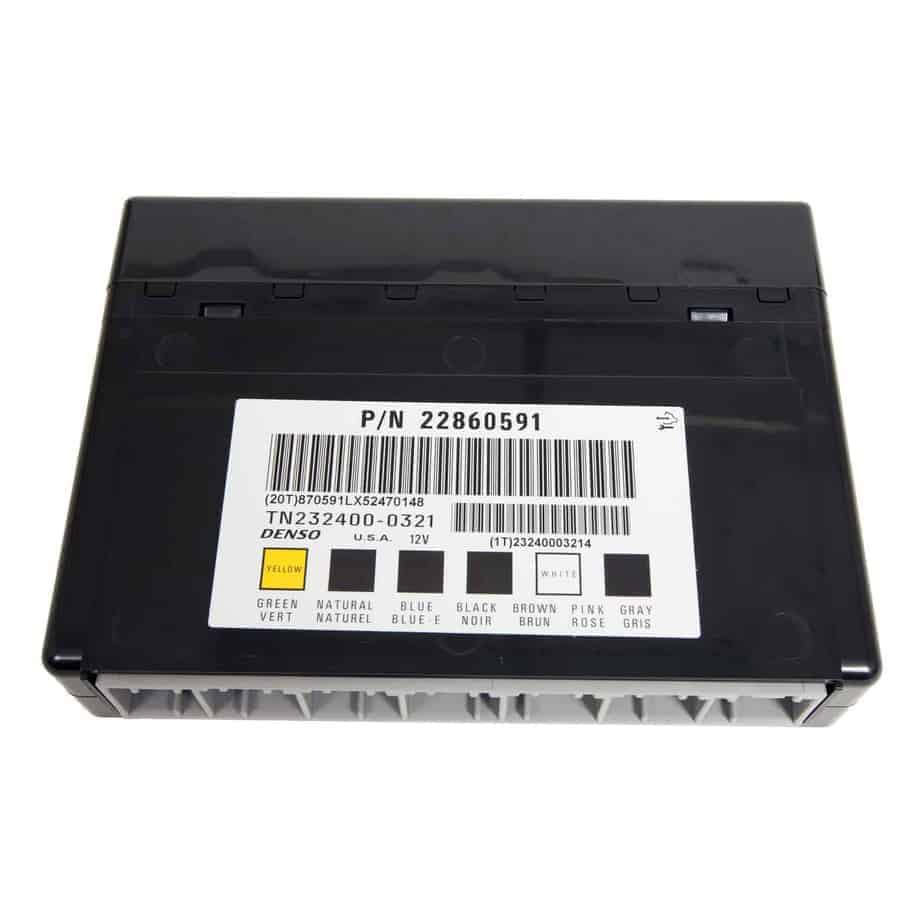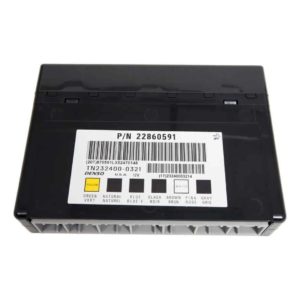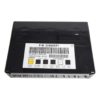Restore Full Functionality to Your Vehicle’s Electronics
Are you dealing with baffling electrical issues in your car, truck, or van? Flickering lights, unresponsive power windows, a haywire security system, or dashboard warnings that come and go are classic signs of a failing Body Control Module (BCM). As the central command for your vehicle’s comfort and convenience features, a faulty BCM can make driving a frustrating experience. This is the reliable, straightforward solution you’ve been looking for. This 2010 STS Body Control Module arrives at your door pre-programmed with the latest GM software, specifically matched to your vehicle’s VIN. This eliminates the need for expensive dealership programming or specialized scan tools, saving you time and money.
A Technician’s Notebook
Just last month, a 2011 Chevy Impala was towed to my shop. The owner was at his wit’s end—the radio would turn on by itself, the door locks would cycle randomly, and the car wouldn’t start intermittently, showing a “Service Theft Deterrent System” message. A quick scan pulled a U0140 code, indicating a loss of communication with the BCM. After confirming power and ground to the module were good, we knew the internal circuitry had failed. We replaced it with one of our VIN-programmed units, and all the bizarre electrical gremlins vanished instantly. The customer drove away with a reliable car and avoided a hefty dealership bill. This is the exact fix for those hard-to-diagnose electrical problems.
Common Signs of a Failing BCM
If your vehicle is showing these symptoms, a faulty BCM is the likely culprit. Replacing it with our pre-programmed unit can resolve these issues and restore proper operation.
- ✔ Erratic or non-functional power windows, door locks, and interior/exterior lights.
- ✔ Instrument cluster gauges behaving strangely or not working at all.
- ✔ The security system engaging randomly, causing a no-start condition.
- ✔ Diagnostic Trouble Codes (DTCs) related to communication errors, such as U0140, U0155, or other U-codes.
- ✔ Wipers or horn activating without input.
- ✔ Problems with key fob recognition or remote start functionality.
A Straightforward Guide to Installation
Installing your new 2010 STS Body Control Module is a manageable task for a confident DIYer. While the exact location varies by model (see fitment list), the general process is similar. Always consult a service manual for your specific vehicle if you are unsure.
- Safety First: Disconnect the negative terminal from your vehicle’s battery and wait a few minutes for the system to fully discharge.
- Locate the BCM: The BCM is typically found under the dashboard on the driver’s or passenger’s side, or in the center console area.
- Remove Trim Panels: Carefully remove any plastic trim or panels necessary to access the module. Keep track of all screws and clips.
- Disconnect and Remove: Unplug the electrical connectors from the old BCM. They have locking tabs that must be depressed. Once disconnected, unbolt or unclip the module from its mounting bracket.
- Install the New Module: Mount your new, pre-programmed BCM in place and securely reconnect all electrical connectors. You should hear a ‘click’ as they lock.
- Reassemble and Reconnect: Reinstall any trim panels you removed. Reconnect the negative battery terminal.
- Perform Final Procedures: Start the vehicle and follow the post-installation steps below to ensure all systems are correctly calibrated.
Important Post-Installation Steps
After installing your new BCM, a couple of final procedures are necessary to ensure all related systems function correctly. These steps are critical for safety and performance.
- Airbag System Reset: To clear the airbag warning light, a technician must perform the ‘Setup SDM Primary Key in BCM’ procedure using a compatible diagnostic tool. This re-establishes communication between the new BCM and the airbag system.
- Brake Pedal Calibration: On some models, the Brake Pedal Position Sensor may need to be recalibrated. This ensures the brake lights and stability control system receive accurate input.
Note: Specific procedures can vary. If you’re not comfortable performing these steps, we recommend seeking assistance from a qualified professional mechanic.
Verified Vehicle Compatibility
This BCM, part number 25826125, is a direct replacement for a wide range of General Motors vehicles. Please verify your original part number is on the list below and that your vehicle is listed. Providing your VIN at checkout is essential for us to program the module correctly for your specific make, model, and options.
Note: Some models require matching specific ID numbers. Please check the full list in the original description or contact us with your VIN.
Frequently Asked Questions
Do I need to program this 2010 STS Body Control Module?
No. The main benefit of our service is that we program the module to your vehicle’s specific VIN before we ship it. This makes the installation process much simpler and avoids a trip to the dealership.
What exactly does a BCM do?
The Body Control Module acts as the brain for your vehicle’s body electronics. It controls non-engine related functions like power windows, locks, lights, wipers, security system, and the instrument cluster.
Where is the BCM located on a 2010 Cadillac STS?
On the 2010 Cadillac STS, the Body Control Module is typically located in the center dash area. Access may require removing the glove box or lower dash panels.
Will this fix a “Service Theft Deterrent System” warning?
In many cases, yes. The BCM is a key part of the anti-theft system. If it fails, it can trigger this warning and prevent the car from starting. Our VIN-programmed module correctly syncs with your vehicle’s security components.
What information do you need from me after I order?
After you complete your purchase, you will need to provide us with your 17-digit Vehicle Identification Number (VIN). We cannot program and ship your BCM without it.
Are any other steps needed after installation?
Yes. As noted above, you will likely need to have the ‘Setup SDM Primary Key’ procedure performed to reset the airbag light and potentially a brake pedal position sensor recalibration. This requires a professional-level scan tool.


